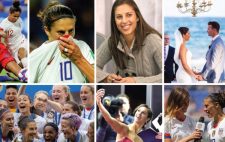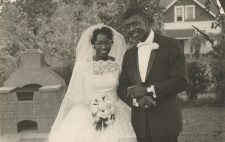In 2004, Carli Lloyd and her trainer James Galanis set a goal: to become the world’s greatest soccer player in the next decade. There was no reason to believe she could ever hit such an enormous milestone. But Lloyd believed it. Galanis did too.
Then in 2016, FIFA named her World Player of the Year. Right on time.
Next month, she’ll appear at The Merion to talk about what it takes to become a champion – to think like one, act like one, and ultimately, have others recognize you as a true leader. (You can attend this up-close and personal event with Lloyd.)
Carli Lloyd began as a South Jersey soccer player and made it all the way to the top of the world, where she is right now. The story of how she got there is inspirational. Don’t miss it.
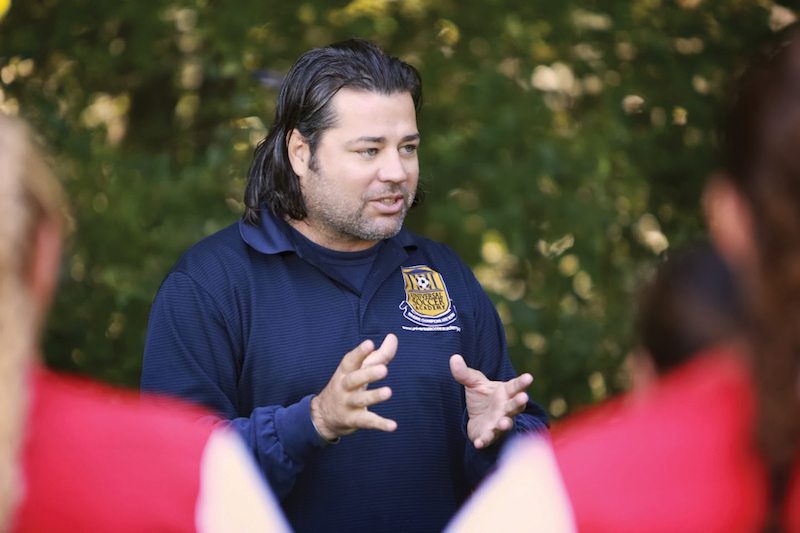
The trainer: James Galanis
Carli Lloyd has repeatedly credited coach James Galanis with making her the champion she is today. The two started to train together in 2003, after Galanis took days to assess Lloyd’s physical and mental abilities. At that first assessment, Galanis told Lloyd she was weak in both those areas – despite her long and successful soccer career so far – but agreed to work with her if she committed to working hard and following his direction. Galanis’ training style is founded on an unwavering commitment to physical and mental workouts. Did a snowfall keep you home from the gym last weekend? Not Carli Lloyd. She’s been trained to never miss a workout. Champions don’t do that.
“When I introduce Carli to new drills or new training methods, it’s hard for her in the beginning. But she struggles through,” says Galanis. “She doesn’t just pack it in and say, ‘I can’t do this. Let’s do something else.’ She has the will to do it until she is good at it. You’ve got to be willing to go through that uncomfortable learning stage until you get to the comfortable stage when you’re able to do it.”
 “When Nobody Was Watching”
“When Nobody Was Watching”
Late last year, Lloyd released her memoir, “When Nobody Was Watching.” In the book, she describes the journey that led her to become the world’s best soccer player, along with heart-wrenching details about her life off the field.
Here is an excerpt:
The moment you think you have arrived, you are in trouble.
In London, in 2012, we win another Olympic gold, and I score twice in the final game to lock it up. It’s a wonderful moment, to be sure, but my focus soon turns completely to the ’15 World Cup, a title the U.S. has not won since 1999. It is time to bring the trophy back to the U.S. – not because it is our birthright, but because we are the best team.
We struggle early in Canada, myself as much as anyone. We advance out of our group, but I am shaken to the core, deflated that I haven’t had more of an impact. James tells me to lighten up. “Nobody will remember what happened in the group stage,” he says. “Now is your time.”
When I take the field for the final, against Japan, all I’m thinking of is emptying the tank, being the hardest-working player. I am not thinking of goals, but in the third minute we have a corner kick and the play is designed for me to run onto a ground ball. It works perfectly and I flick it hard into the corner. I score again a few minutes later, and then, not long after, I control the ball at midfield and see the Japanese keeper off her line. I decide to let it fly. The goal is one of the greatest thrills I’ve ever had on a soccer field. We go on to a 5–2 victory and I am the only woman in World Cup history to have a hat trick in the final.
Six months later I am honored as the World Player of the Year at a gala in Zürich, Switzerland. I share the night with Brian and James, the man who saved my career. I do not share it with my parents.
When my father had open-heart surgery, nobody told me until well afterward. When my sister got married, I was not invited. I love my family and would like nothing more than to reconcile with them. Nobody has done more for me than my parents, who devoted untold amounts of time and money that allowed me to play the game I love. It’s no exaggeration to say I never would have gotten anywhere near a World Cup, an Olympics or even the U.S. national team without them. I have never forgotten that, and I never will.
I have missed sharing all these things with them, but I hope that will one day change.
You can read more from “When Nobody was Watching” here.
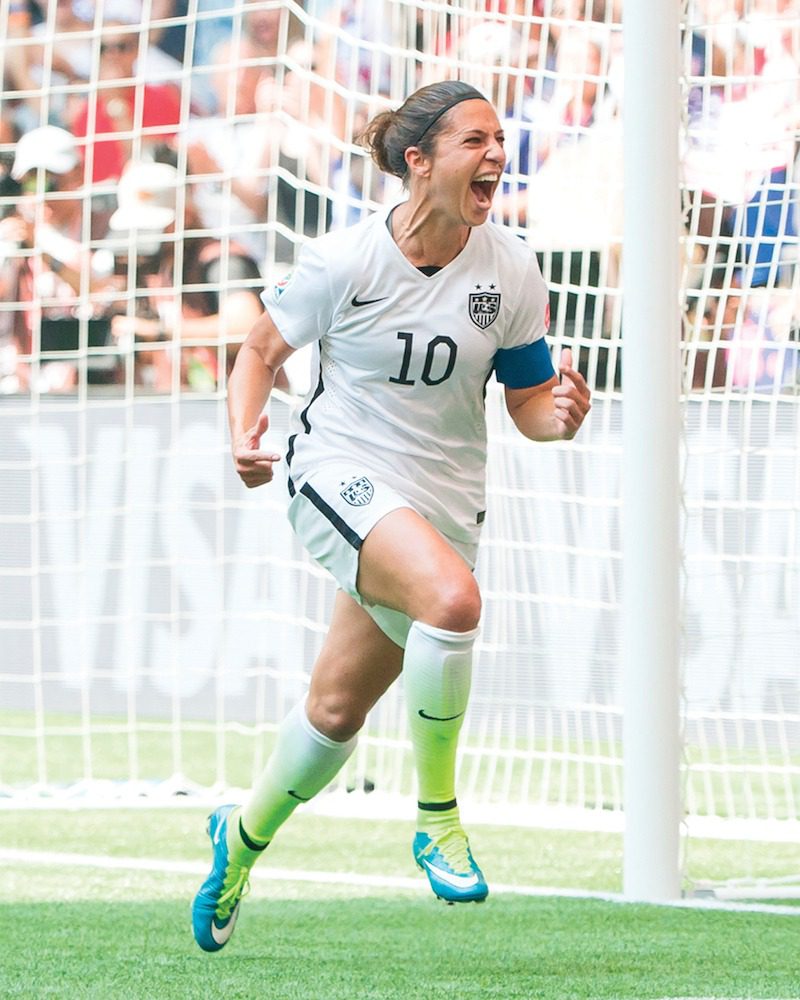
Putting On Her Game Face
Throughout the course of her career, as other national athletes have appeared in fashion magazines or TV programs like “Dancing with the Stars,” Lloyd has made one thing clear: she’s fully focused on athletic performance, not her physical appearance or celebrity status.
“I’m not a billboard woman. I’m not posing for magazines or a swimsuit edition,” she says. “I want my legacy to be as one of the greatest players to have ever played based on performance. I don’t want people to like me because they like my appearance.”
Lloyd has turned down requests to pose for fashion spreads and prime time television appearances, unless it’s to talk about a recent championship or her new book. Her magazine cover – Sports Illustrated in 2015 – celebrated the Olympic Gold medal and her unprecedented hat trick.
“I think throughout my time on the national team I’ve flown under the radar as someone who isn’t flashy, someone who doesn’t care about my hair or makeup or the glitz and glamour,” she says. “I don’t much care about the red carpet or being on the covers of magazines. I don’t put on makeup when I’m getting ready for a game, because why would I? I am gearing up for battle. How is mascara or eyeliner going to help me win?”

Lloyd Fights For #EqualPayForEqualPlay
Last year, Lloyd joined fellow U.S. Soccer teammates Alex Morgan, Megan Rapinoe, Becky Sauerbrunn and Hope Solo in filing a federal complaint with the Equal Employment Opportunity Commission, accusing U.S. Soccer of wage discrimination.
In their complaint, the five players cited recent U.S. Soccer financial reports as proof that they have become the federation’s main economic engine even as, they said, they often earned only half as much – or less – than their male counterparts.
Statistics show that each year, the U.S. men’s and women’s national teams each play a minimum of 20 matches. The top five players on the men’s team make an average of $406,000 from these games, while the top five women are guaranteed only $72,000.
“The fact that women are being mistreated financially is, sadly, not a breaking news story,” Lloyd wrote in an essay for The New York Times. “It goes on in every field. We can’t right all the world’s wrongs, but we’re totally determined to right the unfairness in our field, not just for ourselves but for the young players coming up behind us and for our soccer sisters around the world. We are not backing down anymore.”
“If I’ve learned anything in my career,” she adds, “it’s that nothing worthwhile in life comes easy. That’s just the way it is. This isn’t about a money grab. It’s about doing the right thing, the fair thing. It’s about treating people the way they deserve to be treated, no matter their gender.”
Carli Lloyd’s Career Through the Years
2001
Lloyd starts playing soccer at Rutgers University. She earns multiple awards and trophies,
finishing her collegiate career in 2005 as the school’s all-time leader in points, goals and shots. She begins playing for the United States on the under-21 women’s team.
2003
Lloyd is cut from the U-21 women’s team and decides to finish playing her senior year at Rutgers before hanging up her cleats for good. But her father finds James Galanis, and they begin training. Lloyd will later say Galanis changed the trajectory of her career.
July 10, 2005
Now on the U.S. Women’s Team, Lloyd makes her international debut playing against Ukraine.
March 2007
Team USA wins the Algarve Cup, an invitational tournament in Portugal. The tournament is a breakout performance for Lloyd, and she walks away with the Top Scorer and MVP awards.
2008
Lloyd plays her first Olympics in Beijing and becomes a gold medal hero by scoring a goal just six minutes into overtime. The game ends with a historic 1-0 win, and Lloyd is named the U.S. Female Soccer Athlete of The Year.
2011
Lloyd plays at the FIFA Women’s World Cup in Germany, scoring her first World Cup goal against Colombia, though Team USA later loses the title to Japan in a shoot-off.
2012
Lloyd becomes a second-time gold medal hero at the London Olympics, scoring both goals that clinch the U.S. team’s 2-1 victory over Japan.
2014
During one of Lloyd’s most productive years to date with the national team, she starts all 23 games and scores 15 goals. She is the only player to play every minute of the 2014 CONCACAF Women’s Championship, where she is also named MVP.
2015
Lloyd captains Team USA in the World Cup final, where the team defeats Japan 5-2. Lloyd becomes the first woman in history to score a hat trick in the World Cup with her legendary midfield strike. She is named the 2015 FIFA Woman’s World Player of the Year, making it only the third time an American has been chosen for the title.
2016
Lloyd attends the 2016 Rio Olympics with Team USA. The team shows early strength but only advances to the quarterfinals, where Sweden clinches victory with a score of 1-1, winning on penalties. Lloyd still remains the all-time leading scoring midfielder for the women’s team, and she is named FIFA Woman’s World Player of the Year for the second year in a row.


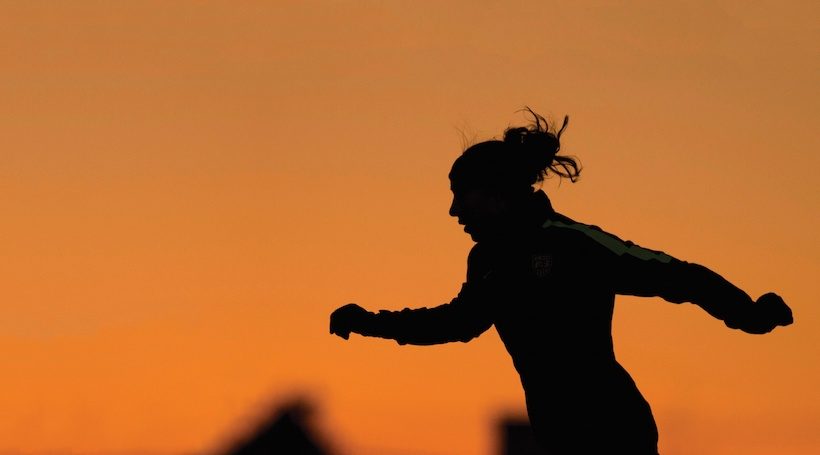
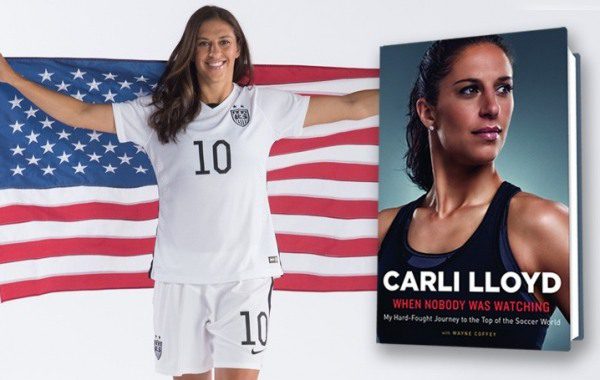 “When Nobody Was Watching”
“When Nobody Was Watching”
